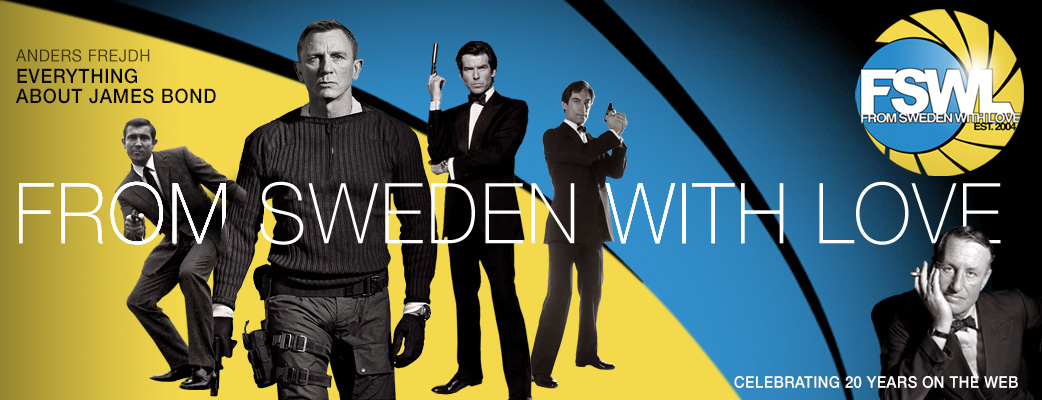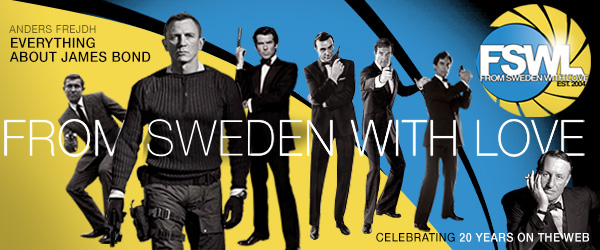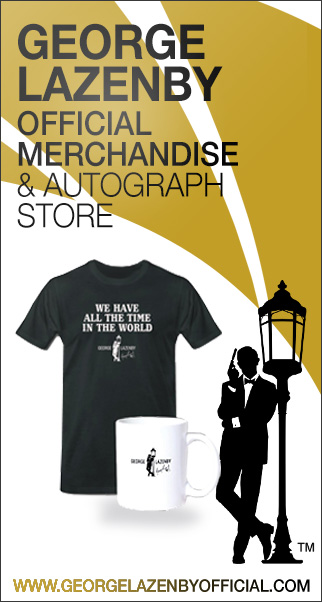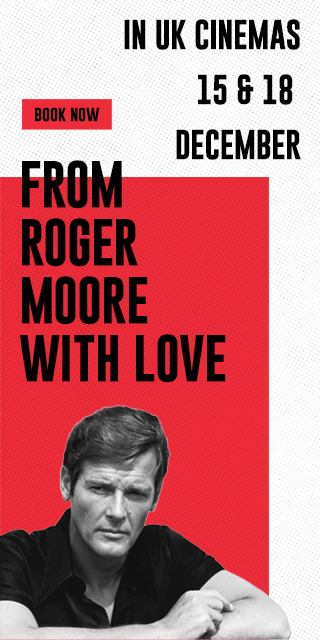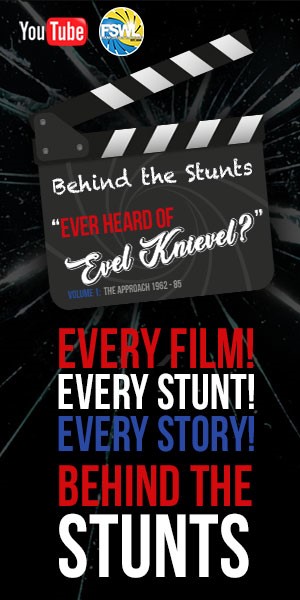Website last updated: 10-6-2025
Home
Competitions
Event
FSWL Merchandise
In Memoriam
Interviews
James Bond 007 articles
James Bond 007 collection
James Bond 007 films
James Bond 007 games
James Bond 007 literature
James Bond 007 news
James Bond 007 products
James Bond 007 shop
James Bond 007 stars
James Bond Fan Clubs
Swedes in the Bond films
Review of Being James Bond: The Daniel Craig Story (2021)
By: Brian Smith
Published:
2021-09-11
2021-09-11

With No Time To Die hitting cinema screens in a couple of weeks, MGM and EON Productions have released a special treat, Being James Bond from Special Treats Productions, a film by Baillie Walsh. Walsh is an acclaimed writer and director of motions pictures, music videos, commercials and documentaries. He previously collaborated with Daniel Craig on Flashbacks of A Fool (2008) and two Sony commercials to tie in with Quantum of Solace (2008) and Skyfall (2012).
Official trailer for Being James Bond: The Daniel Craig Story:
The film looks back over CraigŌĆÖs five Bond films and charts the personal highs and lows of production. It is the honest, and at times, emotional story of his tenure as the longest-serving actor in the role. Narrated via a candid, off-screen conversation between Craig and producers Michael G. Wilson and Barbara Broccoli, the story is told via their personal reminiscences married to behind-the-scenes footage and film clips.
Being the man playing James Bond brings with it a huge amount of pressure and responsibility.
It was challenging enough for the previous incumbents, but more so for Craig who was the first in the era of the online world. Being James Bond begins with CraigŌĆÖs unveiling as the new Bond in 2005 and the hostility engendered by a couple of teenagers whose anti-Craig website garnered disproportionate coverage in the press. This website did not represent the legions of fans who felt they were being unfairly tarred with the same brush by the media. I recall at the time, discussions with fans who had seen Craig in Layer Cake (2004) and who completely got why he was chosen. You only had to look at his cool persona in that film, the way he checked his cuffs and handled a pistol, to appreciate his potential. Barbara Broccoli and Michael G. Wilson recognised that potential much earlier, and as WalshŌĆÖs film reveals, they had to convince the studio that he was their man. Their decision was vindicated with the phenomenal commercial, and critical, success of Casino Royale (2006). The film earned nine BAFTA nominations and awards success continued with a BAFTA and Oscars for Skyfall and SPECTRE (2015).
The documentary reveals for the first time CraigŌĆÖs 2005 screen test, performing a scene from the Casino Royale script. The preparation for the film was clearly at an advanced stage, unlike its follow up, Quantum of Solace, which began shooting without a finished script due to a writersŌĆÖ strike. Craig and the producers are again very honest about the challenges they faced which they believe had a detrimental effect on the finished product. ŌĆ£It wasnŌĆÖt totally focused on [BondŌĆÖs] journey,ŌĆØ comments Wilson. As a veteran of five previous Bond screenplays, it is interesting to hear his analysis of story versus plot, and how the focus was changed for SKYFALL. Quantum of Solace still remains one of my favourites and even Broccoli concedes that, looking back, it ŌĆśis still a good movie.ŌĆØ
Daniel Craig opens up about the pressures of global fame and admits that on his second film he was overwhelmed. ŌĆśI was physically under siege but also I was mentally under siege. When there are people in trees outside your house, you know, they say what have you got to be paranoid about? I didnŌĆÖt go out. I would literally lock myself in and close the curtains. I didnŌĆÖt know how to handle it.ŌĆÖ The same thing happened to Sean Connery after the success of Dr. No (1962) when his house in Acton Park was continually besieged by fans and press. The documentary reveals that it was Hugh Jackman, his co-star in A Steady Rain (2009) on Broadway, who helped him embrace the positives of his new-found fame.
SPECTRE sees Bond leave the service and drive off with Madeleine Swann. It provided an exit of sorts for CraigŌĆÖs Bond but Broccoli felt there was another story to tell. Craig could have said no, but ŌĆ£Barbara drives a hard bargain so I donŌĆÖt think I was even really going to get away with leaving after Spectre.ŌĆØ
One suspects that making this latest film has been the toughest yet. Michael G. Wilson is unusually introspective, especially for a man who has successfully navigated the film company through some of their most complex challenges for almost fifty years. The 79 year old filmmaker admits that itŌĆÖs been ŌĆ£emotionally tough, being DanielŌĆÖs last one. ItŌĆÖs tough on Barbara, itŌĆÖs tough on me, itŌĆÖs tough on Daniel especially, and, you know, you donŌĆÖt appreciate that. You donŌĆÖt appreciate how emotionally difficult it is to do these things.ŌĆØ Daniel Craig has been part of the Bond family for fifteen years. Fittingly, ŌĆśfamilyŌĆÖ is a theme of No Time To Die. Letting go is obviously hard for all concerned. We see Craig film his final scene as James Bond. Then, stripped of his armour, he gives an emotional speech to the cast and crew, and tears all round. WalshŌĆÖs film tells a compelling story and provides a fascinating glimpse into the personal aspect of Bond filmmaking.
Daniel Craig has been incredible in the role. Barbara Broccoli is justifiably proud of the new film and clearly values Craig not just as a great James Bond, but as a co-producer and artistic collaborator. ŌĆ£IŌĆÖm just so thrilled at how this film has turned out,ŌĆØ she says. ŌĆ£ThereŌĆÖs something about this film that the culmination of the five films, and this film in particular, that makes me feel as if not only has he made his mark on the Bond franchise, but he has now made his mark in cinematic history.ŌĆØ Hear, hear!
No Time To Die is Daniel CraigŌĆÖs final James Bond film. James Bond will return.
Review by Brian James Smith. Copyright ┬® 2021 From Sweden with Love. All rights reserved.
>Watch Being James Bond on Apple TV
Tags:
#barbara_broccoli
#brian_james_smith
#daniel_craig
#documentaries
#eon_productions
#mgm
#no_time_to_die
#reviews
Tweet
